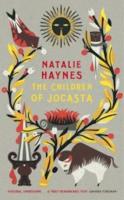
Mantle (2017) h/b 342pp £16.99 (ISBN 9781509836154)
There’s nothing like a good historical novel in times of stress. If right now you want to be transported to another time and place, where people like yourself—however different their circumstances—find themselves faced with the eternal challenges of life, The Children of Jocasta by may well do the trick. Love, death and vengeance are much the same whether dressed in togas or farthingales, and this clever 21st century retake on the Oedipus story packs a tremendous punch.
Once past the slightly irritating shortened forms of familiar names—Ani for Antigone, Polyn for Polyneices—you can settle in to life in ancient Thebes, which is wonderfully drawn: hot, dry and, in times of a plague that sounds remarkably like cholera, deliberately closed off from the world, with the accompanying hot-house emotions roused by this isolation. The city is also ringed by bandits in the surrounding mountains who, under the gang name of ‘The Sphinx’, prey on travellers. The stifling atmosphere of the city and its royal palace is powerfully drawn. Still, traders get in to the markets with painted pots, jewellery, and lengths of gorgeous linens to clothe the grand ladies of Thebes.
These women are the heart of the novel. H. skilfully interweaves the two generations of Jocasta and her children, giving alternate chapters to the mother and to the daughter Ismene so that their lives first predict, and then echo, the terrifying tale they tell. Destined to play minor roles by virtue of their sex, they display real power by means of their intelligence, one by actively exerting herself as queen, the other by a very Greek passion for philosophy which makes her a penetrating observer of her twisted family. Both fight against the rigid control of a patriarchal society riven by lethal jealousy, and a people ‘seeking meaning in messages from gods’ whose existence is doubtful. In Sophocles, Jocasta rates only 148 lines of speech, Ismene barely 80, so it is genuinely thrilling to hear their voices.
Classically trained, Natalie Haynes knows her stuff. The odd anachronisms are, I suspect, deliberate, as are the departures from the old legend: the question of ‘Who is Oedipus?’ is never answered, and Sophocles would not recognise the final denouement. I jibbed at the provocative exchange of burials for Ismene’s two brothers, but the authentic Creon haunts the narrative to its unexpected end. Not a happy ending: this is Tragedy, after all. But a cracking good read.
Isabel Raphael
